Four smartphones that won't turn obsolete in 2021 and make for great Christmas gifts
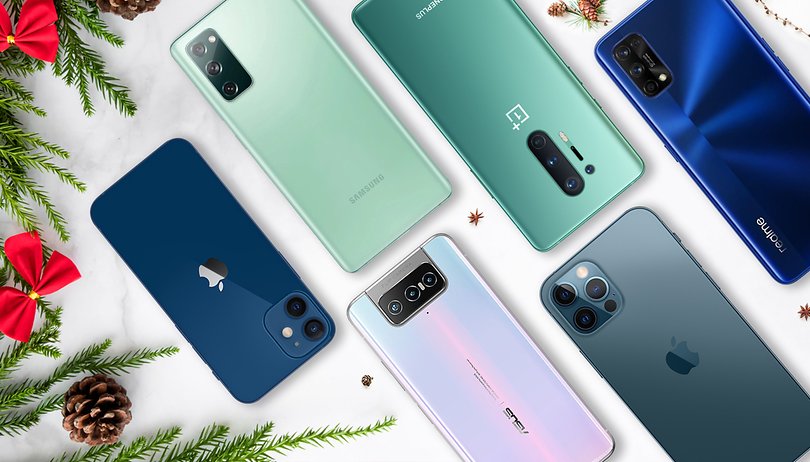

For Christmas this year, NextPit selected smartphones that were released in 2020 that would be great gifts to place under the tree and yet will not go out of fashion the moment New Year celebrations are over.
Buying a smartphone as a Christmas gift can be a risky move. I'm not talking about the risk of making a mistake but rather, the timing. The Christmas 2020 period precedes the first quarter of 2021, a time period when most smartphone manufacturers would announce or release their spring flagships.
The highlight of a frantic release schedule that feeds what I call marketing obsolescence is unprecedented. This is especially relevant in 2021, as the marketing calendar will see an acceleration of releases as manufacturers such as Samsung or OnePlus have brought forward the release dates of their respective flagship smartphones.
So, the question remains. Is it still worth buying a Samsung Galaxy Note 20 Ultra for Christmas 2020 when the Samsung Galaxy S21 could be released as early as January 14th? In absolute terms, it is not impossible. But there is no denying a certain feeling of disappointment when, after purchasing a consumer electronics product at a high price, it is already "artificially" overtaken by its competitor.
So this selection is not so much to advise you on the best smartphones to choose from here and now, but rather to list the models that will most likely remain competitive even as 2021 rolls around.
Summary:
- Editor's Choice: Asus Zenfone 7 Pro, the smartphone that will remain the most competitive in 2021
- Which other smartphones will remain competitive in 2021 which NextPit recommends?
- Marketing and non-programmed obsolescence: What's the difference?
- Obsolescence versus repairability
- How did NextPit select SES smartphones that will remain the most competitive in 2021?
Editor's Choice: Asus Zenfone 7 Pro, the smartphone that will remain the most competitive in 2021
As with every other comparison of the best smartphones, this is a personal choice of the author, who in this case would be me. This choice has obviously been debated within the editorial staff and I will therefore give you the recommendations of my colleagues should their thoughts differ from mine.
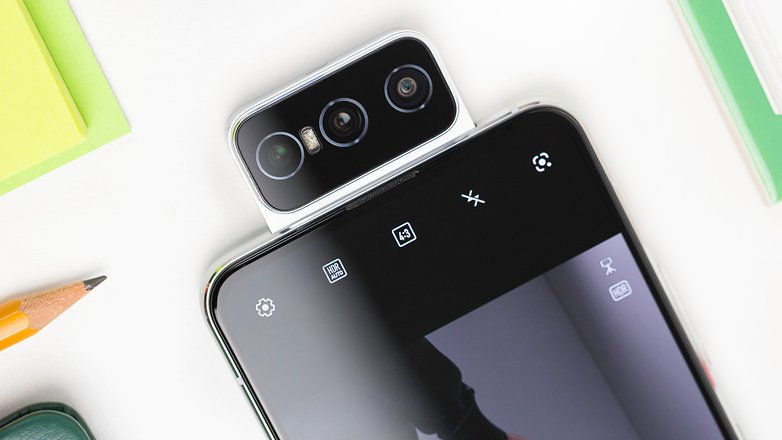
Rating |
 |
| For
|
Against
|
On paper, the Zenfone 7 Pro from Asus is, in my opinion, the smartphone of 2020 which is best equipped to remain competitive against its future rivals when 2021 rolls around.
Announced on August 26, 2020, the Zenfone 7 Pro from Asus is currently selling for €599 ($727) on MarketPlace. This is a very reasonable price point considering what you would receive for a high-end smartphone in terms of hardware.
The price includes a Qualcomm Snapdragon 865+ SoC with 8GB RAM, 256GB of UFS 3.1 storage, and an Adreno 650 GPU. For now, the Snapdragon 865+ only powers high-end gaming smartphones like the Asus ROG Phone 3 and Samsung's latest foldable smartphones such as the Z Fold 2 or Z Flip 5G.
The 5,000 mAh battery provides a maximum battery life of up to 2 full days (although usage patterns greatly influence the final battery life count) and benefits from fast charge compatibility (30 W). This means one would end up with a very solid battery life that very few high-end smartphones offer.
Its triple camera sensor with the main 64-megapixel lens is placed within a refined "flip camera" mechanism, enabling the user to benefit from the same quality when taking a selfie or regular shots. There's also a dedicated 8 MP telephoto lens for added versatility.
With its solid battery life and powerful processor, you can be sure you won't be left in the dust by the competition in 2021 with this smartphone. The Zenfone 7 Pro will only feel threatened by a few flagship phones that will come powered by Qualcomm's Snapdragon 888 processor. Then again, these owners would have paid more than twice the money you did to buy these shiny new devices.
You can read the full Asus Zenfone 7 Pro review by NextPit here
Which other smartphones will remain competitive in 2021? NextPit recommends
Listed below are alternative handsets that were chosen after careful consultation with our editorial team. This process, we felt was necessary to have a balanced outlook without having to arrive at a unanimous decision. What is also to be noted here is the fact that this article does not talk about the best smartphones to choose from in 2020. We're not talking about the best choice at the present time, but rather, referring to the most cost-effective choice that will carry the highest probability of fending-off market obsolescence in 2021.
iPhone 12 Mini
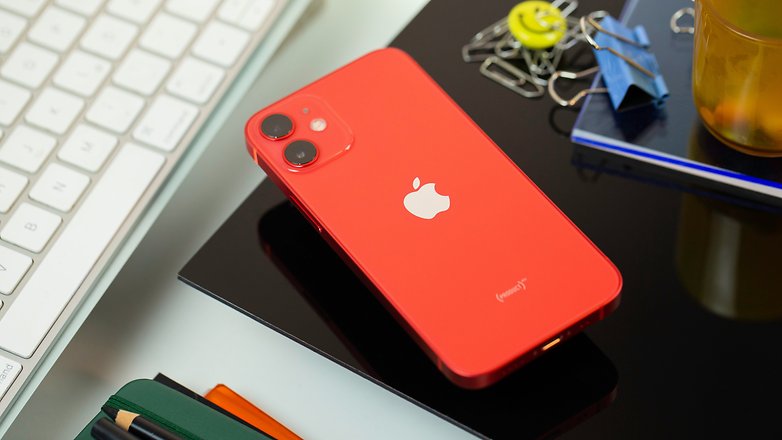
Rating |
 |
| For
|
Against
|
Unsurprisingly (and no matter how much some people may not like it), buying an iPhone is a sure-shot way of staying with a phone that doesn't go obsolete the very next year. Unlike Android models, iPhones rarely come with a discount, with each owner keeping their model for at least a year before selling it, along with everyone else, in order to finance the purchase of the next model.
The iPhone also carries the merit of benefiting from a certain degree of timelessness, be it from the hardware or software perspective. An old iPhone will take a far longer period of time compared than an old Android smartphone in order to end up obsolete. What I mean by that is this: the feeling that its model is outdated is not as strong with an iPhone since they receive updates for a far longer period of time, and the newer models do not deliver quantum leaps in innovation.
With the iPhone 12 Mini, you get the added benefit of the A14 Bionic processor which is currently deemed by many to be the most powerful chip on the market. iOS 14 continues to evolve gradually, even if goes down the path of emulating Android in certain aspects (which is not a bad thing), and you can be sure to get major updates for up to 5 years.
Battery life is, in my opinion, the only handicap in iPhones as I have discovered from my personal experience, that their batteries degrade faster than Android devices over time. Hopefully, Apple has learned the lesson from the Battery Gate scandal and will no longer deploy updates that slow down older iPhones.
Finally, it is certain that Apple will revive the fashionable idea of toting compact smartphones around, which Google has also jumped aboard with its latest Pixel. Watch out in 2021 as many manufacturers will have their "mini" flagship models, and you will then be able to claim loud and clear in the comments section and on the forums that you were fashionable before everyone else.
You can read the complete Apple iPhone 12 Mini review by NextPit here
Samsung Galaxy S20 FE 5G
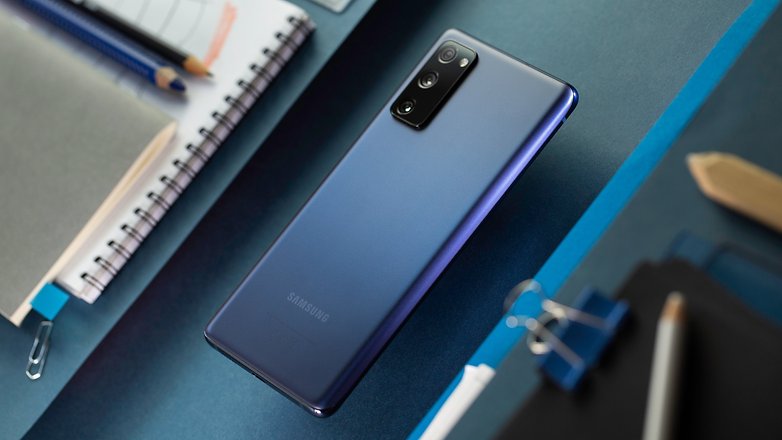
Not reviewed yet |
| For
|
Against
|
The Samsung Galaxy S20 FE 5G was announced on September 23, 2020, and currently sells for €759 ($922). It features a similar specification to the Galaxy S20 5G, with a different camera module (12+8+12 megapixels) and a flat Full HD+ screen similar to the Galaxy Note 20, as well as a plastic back.
But I'm willing to forgive Samsung for this plastic back affront as this would be the only Samsung flagship device in Europe, apart from the Z Fold 2 and Z Flip 5G, to finally offer a Snapdragon 865 chipset and not an Exynos processor.
The AMOLED display supports a 120 Hz refresh rate and offers a resolution of 1080 x 2400 pixels. The 4,500 mAh battery supports 25 W fast charging or 15 W wireless charging. There is a built-in fingerprint reader and a microSD memory card slot that allows you to expand your storage by up to 1TB.
The price of the Galaxy S20 Fan Edition is particularly interesting when you consider that the normal version of the S20 with 8 GB RAM costs €909 ($1,105) when it was introduced last spring. Since then, the price has certainly seen a steep drop.
In fact, the Samsung Galaxy S20 FE 5G is positioned as the entry-level device of Samsung's high-end series. But the concessions are by no means prohibitive. Its flat screen remains excellent despite the absence of QHD+ resolution. The 64 MP rather than 108 MP photo sensor shouldn't bother you, either.
In fact, all these concessions are worth it in my opinion for the switch to the Snapdragon 865 chipset. The Galaxy S21 may mark a big change next year with the potential discontinuation of the Galaxy Note line. I also foresee a serious price hike coming for Samsung's future flagships in 2021.
With this price/performance ratio, the Samsung Galaxy S20 FE remains the best choice for a smartphone from the South Korean giant and promises to remain competitive well into 2021. Maybe not against the Galaxy S21, but compared to other Android flagships, it's is definitely a certainty.
While waiting for the full NextPit review, you can learn more about the Samsung Galaxy S20 FE here
OnePlus 8 Pro
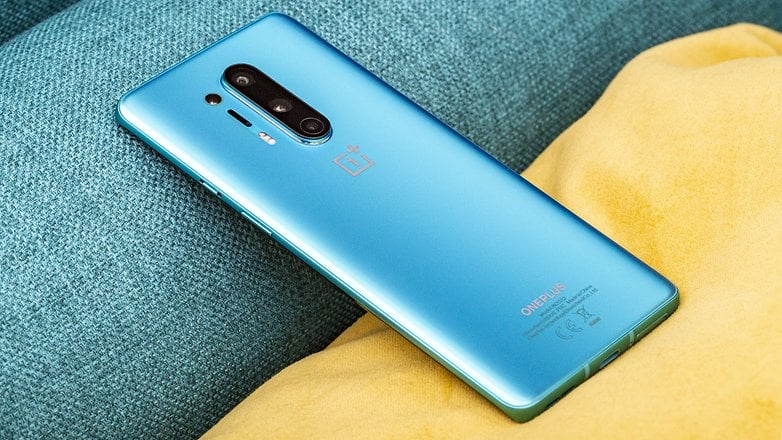
Rating |
 |
| For
|
Against
|
I've already hammered the point home enough times but I'll say it yet again for the sake of transparency: I like OnePlus, or rather, I like the products that OnePlus launches. But even as a fanboy, I have to admit that the brand has taken a strange turn in 2020.
In my opinion, the OnePlus 8 Pro is not only the most expensive smartphone ever launched by the manufacturer, but it's also one of the two or even three best Android smartphones on the market in 2020. And given its technical specifications, it is likely to still be very competitive against its future competitors in 2021, even against the upcoming OnePlus 9.
Given the latest leaks surrounding the next OnePlus flagship which should be released very soon, I don't expect much more than an incremental improvement apart from the processor department, among others. I think the OnePlus 9 will have a hard time distinguishing itself from its predecessors.
To be honest, I'm afraid the only innovations in the OnePlus 9/Pro are an upgrade to the camera module, with a higher resolution sensor and the adoption of the Warp Charge 65T introduced on the OnePlus 8T apart from the possibility of a better processor.
The fluid 6.78-inch AMOLED display with 19.8:9 aspect ratio has a resolution of 3168 x 1440 pixels (QHD+), and is one of the most pleasing features of the phone in terms of smoothness with a refresh rate of 120 Hz. This is all the more admirable when you combine the smoothness of the screen with that of the OxygenOS 11 interface, although the latter is not appreciated by all of the brand's fans.
A Qualcomm Snapdragon 865 chipset makes sure that everything runs fast and you won't have any performance issues with this octa-core processor, an Adreno 650 GPU for all of your gaming needs, 8GB of RAM, and UFS 3.0 storage will keep you in good stead for many years to come.
Perhaps some will find the price/performance ratio of the OnePlus 8T more interesting. The latter also offers the new Warp Charge 65T, while the OnePlus 8 Pro must settle with the Warp Charge 30T (the Warp Charge 65T is compatible but does not allow charging beyond 30 Watts on the OnePlus 8 Pro).
However, I find that the presence of the dedicated telephoto lens, IP68 certification, and wireless charging support to be in favour of the OnePlus 8 Pro in terms of being relevant and competitive well into 2021 and beyond.
You can read the full OnePlus 8 Pro review by NextPit here
Google Pixel 4a 5G

Rating |
 |
| For
|
Against
|
The Google Pixel 4a 5G is a smartphone that delivers the best qualities of the Pixel flagship range but at a more affordable price point. Google has added a wide-angle sensor to the famous 12.2-megapixel main camera, instead of a telephoto lens as on the Pixel 4. It offers, in my opinion, a better price/quality ratio than the Pixel 5.
In his review of the smartphone, my colleague Ben found that the dual-camera at the back delivers results that range from very good to excellent, as Google managed to maintain the performance level of its predecessors. This is especially so with the cheaper Pixel 4a 5G, where using it as a photo-taking device has been a real pleasure, simply because for so little money, you are able to preserve many beautiful and sharp-looking memories.
It's not the most comprehensive smartphone out there, but if you're a shutterbug it's definitely the best choice in this price range. It also has the merit of featuring an additional camera sensor as well as a more powerful SoC than the base Pixel 4a model, as it carries the same Snapdragon 765G processor that is found on the Pixel 5.
Since we're talking about a Pixel, we shouldn't expect miracles in terms of battery life. But this smartphone is a sure-fire bet thing if you're looking for a great camera phone and a user interface that's sleek and fluid.
Because it is a Pixel smartphone, you get three major Android updates instead of two on average from other smartphone manufacturers. And the camera module, thanks to the "magic" of Google's computational photography, will ensure it remains at the top of the best camera phones of 2021 list without a doubt.
You can read the complete Google Pixel 4a 5G review by NextPit here
Marketing and non-programmed obsolescence: What's the difference?
I'm not referring to programmed obsolescence here, which relies on the short life of some components and the progressive rarity of hunting down spare parts, making a smartphone difficult to repair 2 years after its release.
Rather, it's about the ability for manufacturers to convince us that a model that was just released a few months ago is outdated, and also totally uninteresting compared to the latest smartphone that is hot off the manufacturing lines. A parallel can be drawn with fast-fashion, just to illustrate my point.
Traditionally, major smartphone releases take place in the fall of each year. Apple and Google unveil their iPhone and Pixel respectively at their annual conferences. This is also when Huawei presents its Mate range.
But spring also happens to be a high point for selected smartphone manufacturers. Samsung has traditionally released its latest Galaxy S range (its top-of-the-range models), Huawei its P range luxury photophones, Oppo with its Find X range or Realme devices. There is also the trend that points to populating the Gregorian calendar with a new model release just about every other month, with many of these 'new' releases being a variant of a previous handset that differs slightly from yet another model.
Each release is accompanied by technological evolutions, which tend to be in small increments, and this affects the market value of each model while feeding a feeling of an ever faster aging process. In reality, I think we are witnessing a segmentation via levelling down. Smartphones come in ranges of two, three or four models, each one being a range within the range. And more affordable variants come with a technical compromise, which eventually add up to a catalogue that are already way too confusing.
How about an LCD panel with 144 Hz refresh rate rather than OLED display with a 90 Hz refresh rate? You also hear of a camera module with a 108 MP main sensor but without a dedicated telephoto lens as opposed to a totally versatile camera module with a lower resolution for the main sensor, but equipped with a dedicated telephoto lens. In short, instead of proposing the best model, which would normally be the flagship, to arrive as complete as possible in terms of hardware and software, several variants are released, where each of them feature different compromises.
This kind of obsolescence is not intentional as it remains a figment of the imagination, but it certainly does play on our FOMO ("fear of missing out"), which is the fear of missing out on something new or of not being like everyone else - that is, having the latest fashionable device in town.
Obsolescence versus repairability
Programmed obsolescence is a now well-known concept whereby smartphone manufacturers, among others, "force" you to buy a phone by reducing or limiting the lifespan of their products.
This kind of obsolescence is either due to the quality of the components (inexpensive and fragile in entry-level models), or attributed to software updates that affect the operational capabilities of the device (hello, Apple!). It can also result from a lack of spare parts that are made available by the manufacturer.
If the European Parliament is constantly claiming a right to repair, there are also some tech and e-commerce players that try to spread the concept. In the United States, there is a company known as iFixit, specialising in the repair of tech products, and it serves as a barometer of programmed obsolescence with its repairability scores that make headlines with each subsequent smartphone release.
In France, the Fnac/Darty group included a smartphone repairability index in June 2019 as part of its annual after-sales service barometer. This index is developed by LaboFnac and is used in its tests. WeFix is another player, which can roughly be considered as the French version of iFixit, and has also contributed to the development of this index by providing its expertise on the dismantling of smartphones.
According to a survey by the UFC Que Choisir in its April 2019 issue, global smartphone brands are generally quite reliable and score two stars out of three in its reliability index (which takes into account the failure rate reported by users).
But the most reliable products (which have the fewest breakdowns) are not necessarily the most repairable. According to Fnac/Darty's after-sales barometer, a smartphone manufacturer leaves available spare parts for an average of only two years.
While Apple, for example, happens to be one of the most reliable brands, its iPhones are among the least repairable on the market since Apple keeps control of the spare parts and methods as well as the tools required to repair its products.
However, just because my smartphone is easily repairable and spare parts are available for a longer period of time, this doesn't mean that aggressive brand marketing won't persuade me that my model is currently too dated, and that I should move on to the next one.
While it's possible to force manufacturers to adopt more sustainable marketing practices, it is difficult to impose such behaviour on consumers. Regulating a market by hindering purchases seems totally unnatural from an economic viewpoint. And to rely on the awareness and self-responsibility of buyers is utopian, even inept.
How did NextPit select SES smartphones that will remain the most competitive in 2021?
As explained in the introduction, this list is an arbitrary one since it is based on the preferences of the author (who in this case, is me) and the rest of the editors (the list was discussed among all the reviewers).
I've decided not to make an all-encompassing list, so that this selection is not so much to advise you on the best smartphones to choose from now, but rather, to list the models that will most likely remain competitive in well into 2021.
The goal is not to focus on the present moment, but on the future. I have selected those models that, because of their technical specifications, are most likely to withstand the marketing obsolescence as pushed by manufacturers. Models that will give you the feeling of a profitable purchase, of having a better smartphone than others, for a longer period of time.
Of course, we would mainly find high-end models since they happen to be the most well equipped and have the most room for longevity before losing their relevance against newer competitors based on their hardware and software support. These are also the models that we would want to use the longest because their purchase represents a significant expense.
A smartphone of less than €200 or €100 is far less constraining as an investment and I consider them as temporary or backup smartphones, which are meant to be upgraded on a regular basis. The question of their resistance to marketing obsolescence is therefore less of an issue.
These selected models are nevertheless picked on the basis of certain objective criteria such as price, performance (as observed by benchmarks), their technical data sheets, etc.
To make it more authoritative, this list is the product of several subjective viewpoints but is always partially supported by objective and verifiable elements. We also remain sensitive to the community by taking into account readers' recommendations in the comments to populate the selection.
In order to come up with proper recommendations, only models that have been tested at the writing stage are selected. The smartphone is placed in the proper context with the current state of the market, taking into account possible price reductions, the upcoming release of new competing models, its availability for purchase, etc. If a model is not available, it will be replaced by a deservedly newer one (on paper at least), in order to be in the running, and if it is one that we could not review, we will also include it by making out our recommendations based on the opinion of competing tech sites that have reviewed it.
What do you think of this selection? Which models do you think we forgot about and should be included? Do you find the advice and methodology sections useful? What do you think of this new format? Give us your feedback in the comments section!
Also read on NextPit:







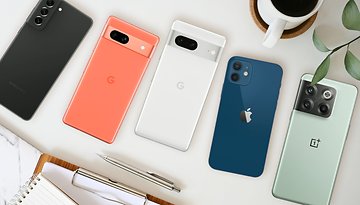
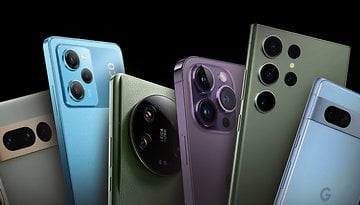

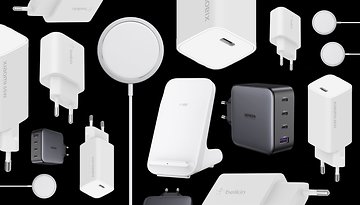
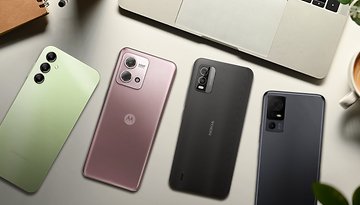


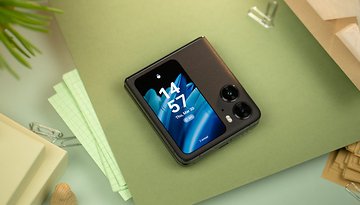


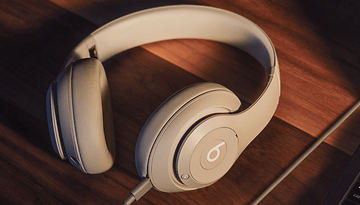


The highlight of a frantic release schedule that feeds what I call marketing obsolescence is unprecedented.
i am using s11plus and it is fine and good for me, i will suggest it to others also.
Oneplus is a quality crapshoot and is only on the list for specs games not lasting quality.
-
Admin
-
Staff
Dec 16, 2020 Link to commentI couldn't disagree more. But that's not a very productive way to debate now is it? So maybe share some constructive examples to support your bold claim. I'm open to listen to them and maybe, even debate? What a crazy idea, right? Debating lol?
Off hand, their failing earbuds and failure to address it.
Numerous phone releases with significant screen problems
The numerous camera bugs that should never have made it to release.
Sim slot failure in the nord.
-
Admin
-
Staff
Dec 16, 2020 Link to commentHow are those issues worse or any different from the ones almost every manufacturer has experienced this year?
Apple and Samsung delivered flagships phones with green display problems.
My OnePlus Buds work just fine but I know there are major issues that seem to be pretty widespread.
I also have to concede that for flagship phones, the OP 8/Pro cameras are sub par compared to their competitors. But OnePlus has made a LOT of progress on their camera app.
Never experienced any SIM slot failure during the 3 months that I used the OP Nord as my daily though.
I mean I get how you could be frustrated by this, and I respect your opinion. Calling OnePlus' devices crap is way over the top though, imho.
A crapshoot refers to the gambling game of craps based on rolling dice.
So while I have a low opinion of them it's not the same as calling them crap, but risky purchase based in past oneplus quality and behavior.
Yes Samsung has had issues. But they are more responsive and across the number and range of phones it's smaller scale.
I hate Samsung's bloat and respect oneplus os freedom.
Asus has a well-earned reputation for hardware quality if otherwise a bit boring.